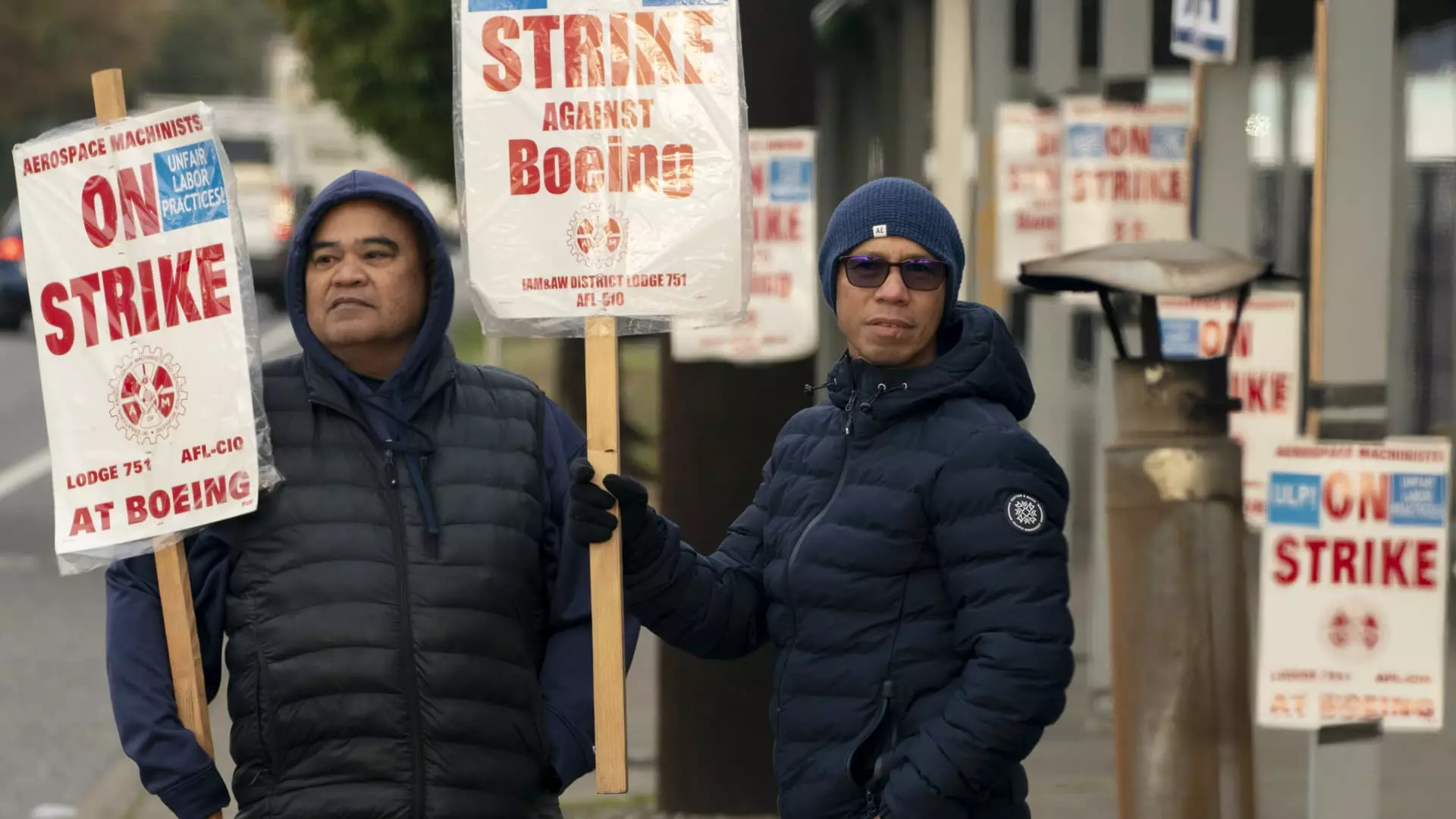The recent machinist strike at Boeing has entered its seventh week, and its repercussions are set to resonate throughout the U.S. economy. The timing is particularly sensitive, as it coincides with the last jobs report released before the upcoming presidential election and a critical Federal Reserve meeting. With 44,000 workers striking during the Labor Department’s mid-October survey, the stakes are high. The majority of these workers—33,000 machinists—abruptly halted operations on September 13 after rejecting a labor contract finessed by their union. This marked the first strike by Boeing machinists since 2008, calling into question not just job security, but the stability of the aerospace manufacturing sector as well.
The strike’s immediate impact on job statistics is expected to be significant. Economists project that the U.S. added approximately 100,000 jobs in October, but this might be an optimistic estimation given the disruptions. Bank of America has suggested that the actual payroll growth could fall short by at least 50,000 due to various factors—including the dual hurricanes that recently impacted the coast and the continuing machinist strike. Notably, Federal Reserve Governor Christopher Waller has indicated that these events could lead to a considerable decline in employment figures, suggesting a potential loss of around 100,000 jobs in the October report. He cautioned that while visible effects on unemployment might be minimal, the underlying issues remain significant and are expected to have lasting implications.
Adding to Boeing’s challenges is the context of its leadership transition. New CEO Kelly Ortberg is attempting to navigate the company through a series of crises ranging from safety concerns to financial instability. The strike complicates this already precarious situation, as Ortberg aims to rejuvenate the firm while enhancing operational efficiency. The recent union vote against a proposed labor contract—despite it offering substantial wage increases—signals deep-seated discontent among employees. In this context, even the involvement of the Biden administration in negotiations showcases the high stakes surrounding this labor dispute—highlighting the reliance on Boeing as a cornerstone of the U.S. manufacturing landscape.
Looking ahead, the longer-term implications of the strike are poised to unfold. Reports indicate that Boeing intends to reduce its global workforce by 10%, impacting approximately 17,000 employees. However, specific layoff announcements are not expected until mid-November, prolonging uncertainty for the workforce. Ortberg has underscored the necessity for a leaner operation, citing employee feedback about excessive overhead as a critical factor that hampers productivity. By streamlining operations, the company hopes to foster a more agile workforce capable of meeting the challenges that lie ahead.
The ramifications of Boeing’s strike extend beyond just the company itself; they threaten the stability of the fragile aerospace supply chain. For instance, Spirit AeroSystems, a fuselage manufacturer, has already placed about 700 of its employees in Wichita on a temporary furlough. As the situation evolves, the company faces the potential for even more drastic measures, with hundreds of additional furloughs or layoffs looming if the Boeing strike extends beyond November 25. Such interdependencies within the aerospace supply chain illustrate how one company’s labor dispute can catalyze broader economic consequences.
As Boeing and its workforce stand at a crossroads, the aftermath of the machinist strike will likely reverberate through the economy for months to come. The complexities of labor negotiations, operational restructuring, and the intricate web of supply chain dependencies create a volatile environment. As stakeholders—from the Federal Reserve to local economies—monitor these developments, the future of Boeing, its employees, and the broader aerospace industry remains uncertain. The need for a resolution grows more pressing, underscoring a fundamental truth about labor relations: the balance between employee rights and corporate responsibilities is often fragile yet essential for sustainable economic growth.


Leave a Reply